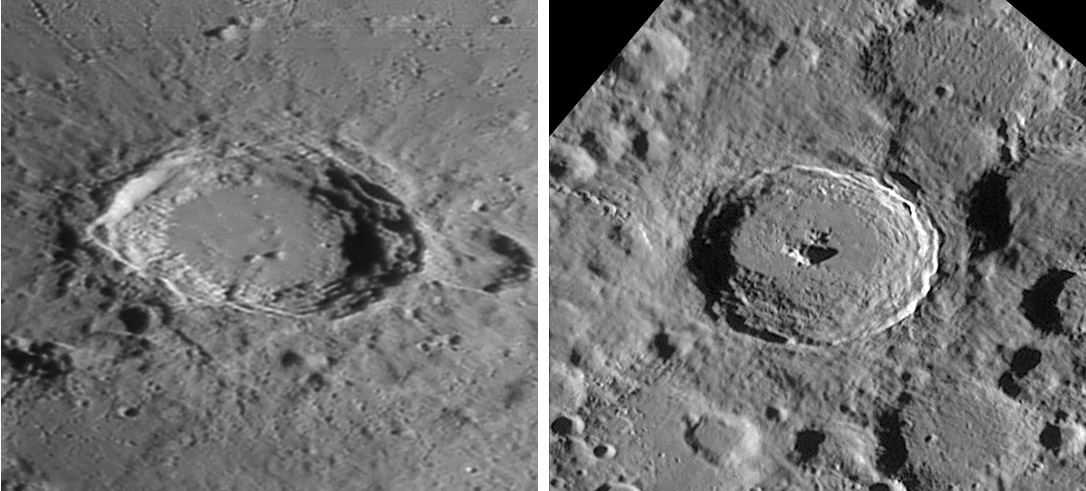
left image by Pavel Presnyakov, 100 km from Kiev, Ukraine, and right image by Mike Wirths
Aristoteles (87 km diameter) and Tycho (85 km) are nearly the same size, and both are relatively young, although Aristoteles lacks fresh rays. Despite their similarity in diameter, they look different. Most obviously, Tycho has a compact central mountain, 2.3 km tall, and Aristoteles has only a few stubs of peaks, the highest being 340 m. The walls of Tycho are not perfect terraces but there are a number of identifiable steps below the sharp but narrow rim scarp. And note that debris from the wall apparently litters Tycho’s floor. The walls of Aristoteles are less regular, with some lovely stair-step terraces on the south (nearest) wall, and there is a huge scarp and slumped wall rock on the west (left), with a Plato-like mountain that has become partially separated from the the west rim. The opposite, eastern, rim is in shadow in Pavel’s view, but it has been affected by overlapping the older crater Mitchell. Look where the floor of Aristoteles meets the crater wall. The lava-like plains embay or cover the edge of the wall material and the wall debris on the crater’s floor. The depth of Aristoteles is 3.5 km, but Tycho is 4.6 km deep. Apparently, Aristoteles has been flooded by about one km thickness of lava. That is why the lava covers the edge of the wall, and why the peaks are so tiny. The material does not appear to be mare basalt because it is not dark at full Moon, but it certainly looks like lava.
Technical Details:
24.02.2007. TAL-250K + Philips 840, raw + barlow 3Ñ… TeleVu. 2 frame mosaic with 100 frames from 2000 in Registax4, deconvolution in MaximDL and Photoshop CS.
Right image: 18 July, 2006. 18″ Starmaster + camera Lumenera Infinity 2-2 + 2.5X Powermate barlow + red filter; 132/550 stacked frames using Registax 3. CAW cut and rotated this piece from Mike’s large image that was LPOD from July 22, 2006.
Related Links:
Rükl charts 5 & 64
Another view
Yesterday's LPOD: Extreme Limb
Tomorrow's LPOD: Threading the Pillars



